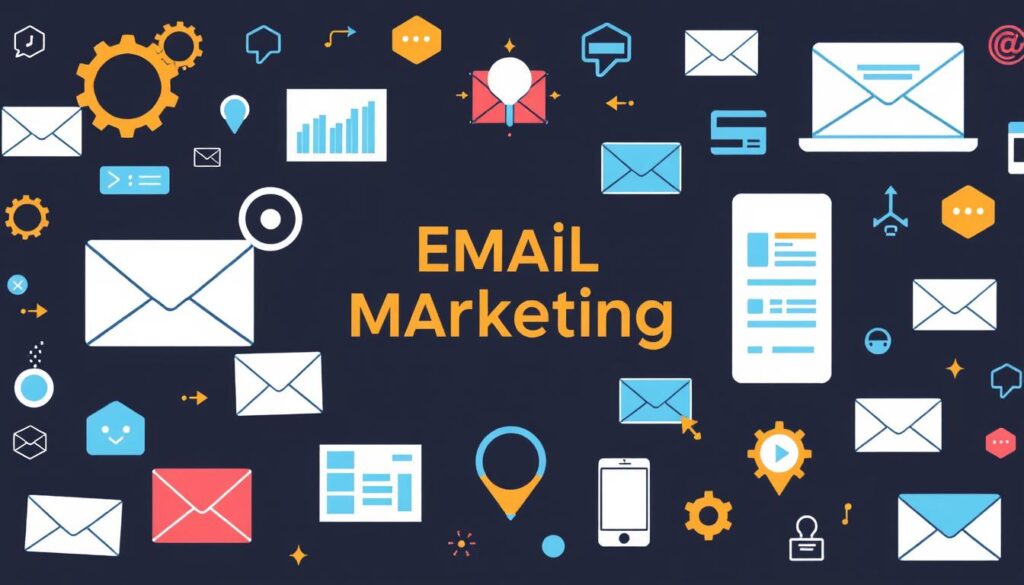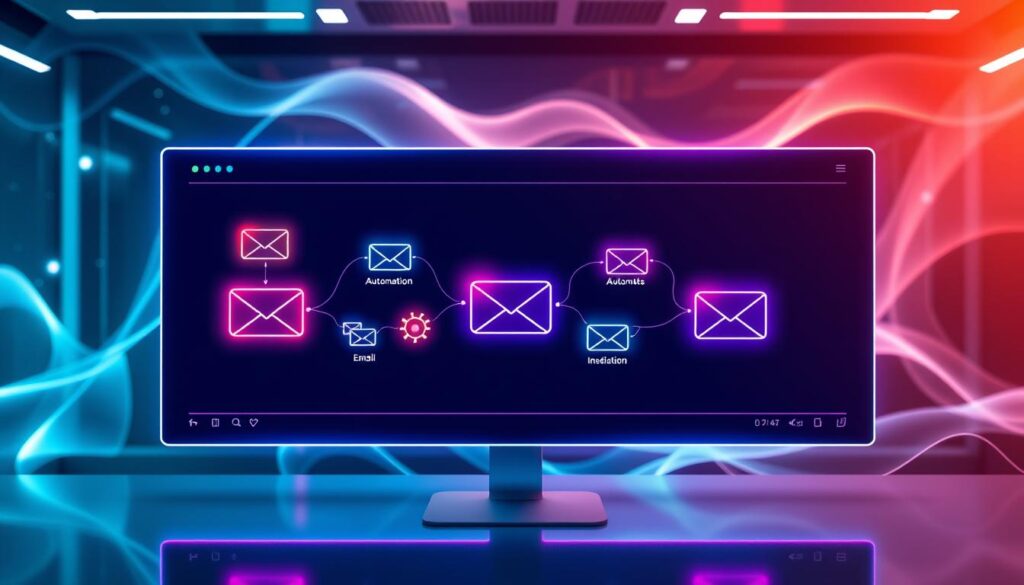Email automation tools have become essential for marketers aiming to enhance their marketing efficiency. By automating repetitive tasks, these tools streamline processes and allow for more effective communication with audiences. With the right email marketing software, businesses can manage bulk email campaigns effortlessly, ensuring that each message is personalized and engaging. By incorporating automated workflows, companies not only improve their outreach efforts but also significantly boost customer engagement and return on investment (ROI). Understanding the pivotal role of email automation in today’s competitive landscape is crucial for optimizing marketing strategies.
Key Takeaways
- Email automation tools enhance marketing efficiency by automating repetitive tasks.
- Personalized communication improves customer engagement in bulk email campaigns.
- Successful email marketing software integrates automated workflows for better outreach.
- Automation contributes to a higher return on investment (ROI) for marketing efforts.
- Staying competitive requires understanding and employing email automation strategies.
Understanding Email Automation
Email automation has transformed the landscape of digital marketing, enhancing how brands communicate with their audience. This approach allows businesses to send emails automatically based on specific triggers or scheduled times, ensuring timely communication that resonates with the user. The evolution of email marketing has shifted from simple bulk-sending methods to sophisticated systems capable of personalizing messages derived from user behavior.
The Evolution of Email Marketing
The email marketing evolution highlights a significant shift toward creating more meaningful interactions between brands and consumers. Email communication now emphasizes the importance of automated communication through various types of messaging, including triggered emails, which are sent based on specific user actions, and sequential emails that follow a predetermined series of messages. This advancement enables marketers to segment their lists and target specific demographics more effectively.
Understanding the nuances of email automation can lead to effective strategies that enhance customer engagement. Automation not only reduces the manual effort required for email marketing but also ensures that each communication feels personal and relevant. This evolution in the marketing approach signifies a crucial shift in how brands connect with their audience, ultimately maximizing the potential for success.
| Type of Email | Description | Benefit |
|---|---|---|
| Triggered Emails | Sent based on specific actions, such as signing up or making a purchase. | Increases relevance and timeliness of communication. |
| Sequential Emails | Messages that follow a pre-defined sequence, often used in drip campaigns. | Builds engagement over time. |
| Event-Based Communication | Emails triggered by significant events, like anniversaries or birthdays. | Enhances customer relationships through personalized outreach. |
What Are Email Automation Tools?
Email automation tools represent essential software that streamlines and enhances communication strategies in marketing. These tools empower businesses to execute effective email campaigns automatically, allowing for efficient engagement with customers and prospects.
The core functionalities of email automation tools include managing contact lists, setting up automated email sequences, and providing detailed analytics on campaign performance. With options like email marketing software from providers such as Mailchimp, HubSpot, and Constant Contact, businesses can tailor their approaches to meet specific needs.
Key features of email tools often incorporate ready-to-use templates for designers seeking to save time, as well as personalization options that allow brands to connect deeply with their audience. Further, integration capabilities enable seamless connectivity with other marketing platforms, ensuring a unified strategy in nurturing leads and converting prospects into loyal customers.
| Tool | Key Features | Best For |
|---|---|---|
| Mailchimp | Drag-and-drop builder, analytics, audience segmentation | Small to medium businesses |
| HubSpot | CRM integration, lead scoring, personalization | Growing companies |
| Constant Contact | Event marketing, social media integration, list management | Nonprofits, event planners |
Benefits of Using Email Automation Tools
Email automation tools offer numerous advantages that can transform marketing strategies. One of the primary benefits of email automation is the ability to deliver personalized content tailored to customer preferences. This leads to improved engagement, as recipients are more likely to interact with relevant messages. Implementing these tools streamlines communication, allowing businesses to maintain consistent contact with their audience.
Another key aspect is enhanced efficiency. Automation minimizes the manual labor associated with scheduling and sending emails. This means that marketers can focus their efforts on developing impactful campaigns rather than getting bogged down in repetitive tasks. The tools provide robust tracking capabilities, enabling data-driven decision-making. Companies can easily assess the effectiveness of their campaigns and make real-time adjustments, ensuring optimal performance.
Finally, the integration of automation leads to higher conversion rates and boosts customer satisfaction. By sending timely, relevant messages, brands can foster loyalty and encourage repeat business, ultimately contributing to long-term success.
Key Features to Look for in Email Marketing Software
When selecting email marketing software, understanding the essential features of email marketing software can significantly impact your campaigns. A user-friendly interface allows for easy email design, making it straightforward even for those with limited technical skills. This fosters creativity and encourages trying out new ideas in your email campaigns.
Another crucial aspect is the ability to perform list segmentation. This feature allows marketers to divide their email lists into smaller, targeted segments based on various criteria such as demographics, behavior, or engagement levels. By utilizing list segmentation, businesses can tailor their marketing messages, ensuring higher open and click-through rates.
The integration capabilities of the software are also vital. Seamless integration with customer relationship management (CRM) systems and other marketing tools enhances data flow and collaboration across platforms. This connectivity enables marketers to manage campaigns more effectively by leveraging insights from various sources.
A/B testing is an additional feature worth considering. This functionality facilitates experimentation with different email variants, helping identify which elements resonate best with your audience. By analyzing these results, you can refine your strategies to enhance overall performance continuously.
| Feature | Description |
|---|---|
| User-friendly Interface | Easy-to-use design tools for creating emails without technical expertise. |
| List Segmentation | Allows targeting specific groups within your lists for tailored messages. |
| Integration Capabilities | Connects with CRM and other marketing platforms for streamlined processes. |
| A/B Testing | Enables comparison of email variants to optimize engagement. |
Email Automation Tools vs. Traditional Email Marketing
In the competitive landscape of digital marketing, understanding the nuances of email automation vs. traditional marketing is essential for businesses aiming to optimize their outreach. Traditional email marketing often relies on manual processes, which can be tedious and error-prone. In contrast, email automation tools streamline these tasks, allowing marketers to focus on strategy rather than execution.
When conducting an efficiency comparison, automated systems solidify their advantage by significantly reducing the time spent on campaign management. Tasks such as audience segmentation, email scheduling, and performance analysis can all be managed seamlessly with automation tools. This results in faster campaign launches and more accurate targeting of potential customers.
Additionally, the effectiveness of email automation cannot be overstated. Automated systems provide valuable insights through analytics, allowing marketers to measure engagement and adapt strategies accordingly. Traditional methods lack this level of sophistication, often leading to missed opportunities for engagement. By utilizing advanced metrics, businesses can refine their tactics to enhance user interaction and improve overall campaign success.
Top Email Automation Tools in 2023
As of 2023, several email automation tools stand out in the competitive landscape of email marketing. By leveraging the best email automation tools, businesses can significantly enhance their marketing efforts and improve engagement with their audience. Platforms such as Mailchimp, HubSpot, and Sendinblue have gained a reputation for their user-friendly interfaces and comprehensive functionalities.
Mailchimp offers robust features tailored for diverse marketing strategies, while HubSpot provides exceptional integration with CRM functionalities. Sendinblue has gained traction for its cost-effective pricing coupled with powerful automation capabilities. These 2023 email marketing software solutions cater to varying business needs, making tool comparisons essential.
ActiveCampaign stands out for its advanced automation capabilities, perfect for marketers looking to create intricate customer journeys. ConvertKit, on the other hand, is ideal for content creators seeking straightforward solutions that inspire engagement and drive conversions.
- Pricing: Different plans cater to varied budgets.
- Ease of Use: A user-friendly interface is crucial for efficient implementation.
- Support Options: Quality support can enhance the user experience.
- Feature Variety: Automated workflows, templates, and analytics options are vital.
| Tool | Key Features | Pricing | Target Audience |
|---|---|---|---|
| Mailchimp | User-friendly design, analytics, and A/B testing | Starts at $11/month | Small to medium businesses |
| HubSpot | CRM integration, detailed analytics, custom workflows | Starts at $50/month | Mid-sized to large businesses |
| Sendinblue | Unlimited contacts, SMS marketing, A/B testing | Starts at $25/month | Small businesses and startups |
| ActiveCampaign | Advanced automation, segmentation, and sales automation | Starts at $9/month | Businesses focusing on marketing automation |
| ConvertKit | Landing page creation, visual automation builder | Starts at $15/month | Content creators and bloggers |
This examination exemplifies the importance of making informed decisions while choosing the right software for email marketing needs. Utilize these insights to find the optimal match for your marketing strategies in 2023.
Email Workflow Automation Explained
Email workflow automation plays a crucial role in enhancing marketing efficiency by allowing businesses to create a series of automated emails triggered by specific customer actions. This method facilitates structured communication with audiences, ensuring that potential leads receive pertinent information tailored to their interactions.
By implementing automated workflows, marketers can maintain consistent engagement throughout the buyer’s journey. A typical workflow might include:
- Welcome emails to greet new subscribers
- Follow-up messages based on user behavior
- Promotional offers aligned with customer interests
This strategic approach not only nurtures leads but also drives conversions effectively. Each email in the sequence can be personalized and designed to resonate with the recipient, further improving the overall experience.
Creating Compelling Automated Email Sequences
Crafting automated email sequences that captivate your audience demands a thoughtful approach to effective messaging. Start by pinpointing key moments in the customer journey that can be enhanced through engagement. Tailored content, aligned with user expectations, increases the likelihood of positive responses.
Integrating personalization plays a crucial role in delivering compelling email campaigns. Utilize customer data to craft messages that resonate with their specific needs and interests. This can significantly boost engagement, as recipients feel understood and valued.
Incorporating a balance of informative content, promotional offers, and engaging calls-to-action will strengthen your automated email sequences. Each email should serve a distinct purpose, guiding recipients smoothly through their journey while encouraging them to take desired actions.
Consistent testing and optimization are vital. Monitoring responses will help you determine what resonates most with your audience, allowing you to refine your approach over time. By focusing on compelling and contextually relevant messaging, your automated email sequences can drive significant results.
Utilizing Email Drip Campaigns Effectively
Email drip campaigns are pivotal in modern marketing automation strategies. These campaigns consist of a series of scheduled emails sent to targeted recipients over a specified time frame. Their main objective is to guide users through the sales funnel, nurturing leads effectively and enhancing engagement levels.
To achieve the effective use of email drip campaigns, follow these guidelines:
- Define Clear Objectives: Establish measurable goals for your campaigns, such as increasing conversions or enhancing brand awareness.
- Segment Your Audience: Categorize subscribers based on engagement levels, preferences, and behaviors, ensuring your messaging aligns with their interests.
- Create Engaging Content: Each email should be relevant and valuable, offering insights or solutions that address the recipient’s needs.
- Monitor Performance: Analyze essential metrics like open rates, click-through rates, and conversions. This data drives adjustments for better outcomes.
- Adjust Timing and Frequency: Find the optimal times and intervals for sending emails by experimenting and analyzing audience responses.
By implementing these strategies, marketers can maximize the effectiveness of email drip campaigns, resulting in higher engagement and improved conversion rates.
| Strategy | Description |
|---|---|
| Clear Objectives | Establish measurable goals to guide the campaign’s direction. |
| Audience Segmentation | Organize recipients into groups for targeted messaging. |
| Engaging Content | Create emails that provide value and resonate with the audience. |
| Performance Monitoring | Analyze metrics to understand campaign success and areas for improvement. |
| Timing & Frequency | Determine the best schedule for sending emails to maximize engagement. |
How to Manage Your Email List with Email Automation Tools
Effective email list management serves as a cornerstone for successful marketing campaigns. Utilizing automation tools streamlines this process, allowing businesses to categorize subscribers based on specific criteria such as demographics, behavior, and preferences. This segmentation ensures that the right message reaches the right audience, enhancing engagement and satisfaction.
Automation tools simplify the opt-in and opt-out procedures, which helps in maintaining compliance with privacy regulations. Businesses can confidently grow their email list while ensuring that all processes meet legal standards. Regularly cleaning and updating the email list becomes essential. Removing inactive subscribers not only improves deliverability rates but also fosters a more engaged audience.
Incorporating effective strategies into email list management leads to improved outcomes overall. Here are some recommended practices:
- Use segmentation to target specific groups within your audience.
- Automate your sign-up forms and preferences to reduce manual input.
- Regularly audit and update your email lists to maintain accuracy.
- Engage inactive subscribers through re-engagement campaigns.
- Leverage data analytics to understand subscriber behavior better.
| Effective Strategies | Benefits |
|---|---|
| Segmentation | Targeted messaging increases engagement rates. |
| Automated Opt-in Processes | Streamlines subscription management and compliance. |
| Regular List Cleaning | Enhances deliverability and sender reputation. |
| Re-engagement Campaigns | Breathes new life into dormant subscribers. |
| Data Analytics | Improves targeting and personalization. |
By implementing these effective strategies, businesses can significantly enhance their email list management processes through automation tools, resulting in more impactful marketing campaigns.
Email Autoresponders: A Game Changer for Your Campaigns
Email autoresponders serve as invaluable tools in modern marketing strategies. These automated email responses trigger effortlessly based on specific user actions, such as signing up for newsletters or making a purchase. Implementing email autoresponders can significantly enhance campaign efficiency by ensuring timely communication with subscribers. This immediate engagement fosters a better user experience and encourages ongoing interaction with the brand.
- Welcome emails that greet new subscribers instantly.
- Order confirmations that provide necessary details after a purchase.
- Follow-up messages that encourage further action, such as feedback or additional offers.
By automating these responses, marketers can save valuable time and resources, allowing them to focus on more strategic aspects of their campaigns. The ability to maintain consistent and relevant communication with prospects and existing customers enhances overall engagement, proving that email autoresponders are indeed a game changer in the world of email marketing.
Read More about Email Marketing
Boost Your Email Marketing ROI: Optimization Tips
Email Marketing Trends: What’s Hot in 2024
Marketing Software Free: Top Tools to Boost Your Business in 2024
Effective Email Marketing Strategies for Success
Boost Your Campaigns with Email Marketing Analytics
Mastering Email Campaign Management: Tips & Tricks
Optimizing Your Bulk Email Campaigns
To achieve success in email marketing, optimizing bulk email campaigns is essential. Start by delivering high-quality content that speaks directly to your audience’s needs and interests. This means segmenting your email list appropriately, allowing you to tailor messages to specific groups, which increases relevance and engagement.
Regularly analyzing campaign performance metrics such as open rates, click-through rates, and conversion rates can provide critical insights. By understanding what content resonates with your audience, you can make informed decisions that enhance future campaigns. A/B testing various elements, including subject lines, content formats, and even the timing of your emails, is another effective strategy to fine-tune your email marketing efforts.
Additionally, focus on crafting engaging content with clear calls to action. This not only drives user interaction but also helps to maximize ROI. By continuously refining your strategies based on performance data, you can significantly improve the effectiveness of your bulk email initiatives, ultimately leading to better campaign performance and greater audience satisfaction.





